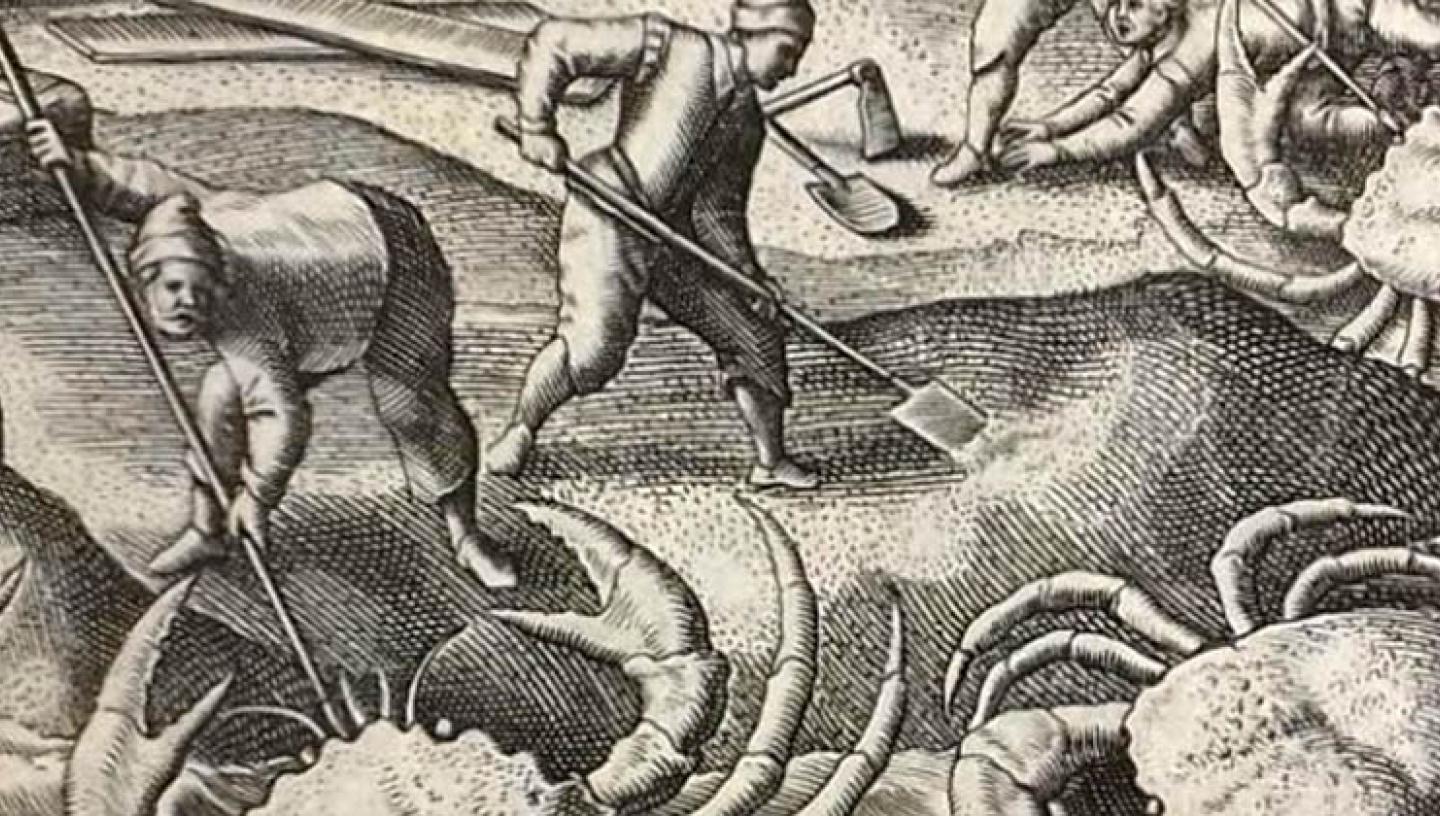
20 Nov 2017
380 prints, 186 books, 9 weeks and one question: how did the De Bry prints end up at the National Maritime Museum? Silvia Massa tackled this question during her research internship.
By Silvia Massa, Research Intern
Who were the de Brys?
Theodor de Bry and his sons Johann Theodor and Johann Israel were a family of engravers and publishers originally from the Low Countries who were active in Germany between sixteenth and seventeenth centuries. Their most famous work is a compilation of 25 books, Collectiones peregrinatiorum in Indiam Orientalem et Indiam Occidentalem (1590–1634) dedicated to nearly 50 famous explorers’ voyages of the early modern era, from Columbus and Linschoten, to Vespucci and Van Noort.
This monumental geographical publication is known as “Great Voyages” and “Small Voyages”: 13 books devoted to America and 12 books about Africa and India. Since their publication, these books were absolute best-sellers, especially because of the very high quality of the prints (around 600 copper engravings in total) illustrating the travel accounts. These images were immediately appreciated because they offered a broad representation of the overseas world and their inhabitants, encompassing not only maps and charts of the voyages, but also scenes of triumphal explorers landing in foreign lands, attempts to trade with the indigenous people and insights into their daily lives, costumes, religions and traditions.
The De Brys, who conceived, engraved and published the collection, never went to Hispaniola or to Congo, so they had to rely on other illustrations, on the information contained in the travel accounts and… on their own imagination. Hence why we find images showing Dutch explorers riding turtles and fighting giant crabs.
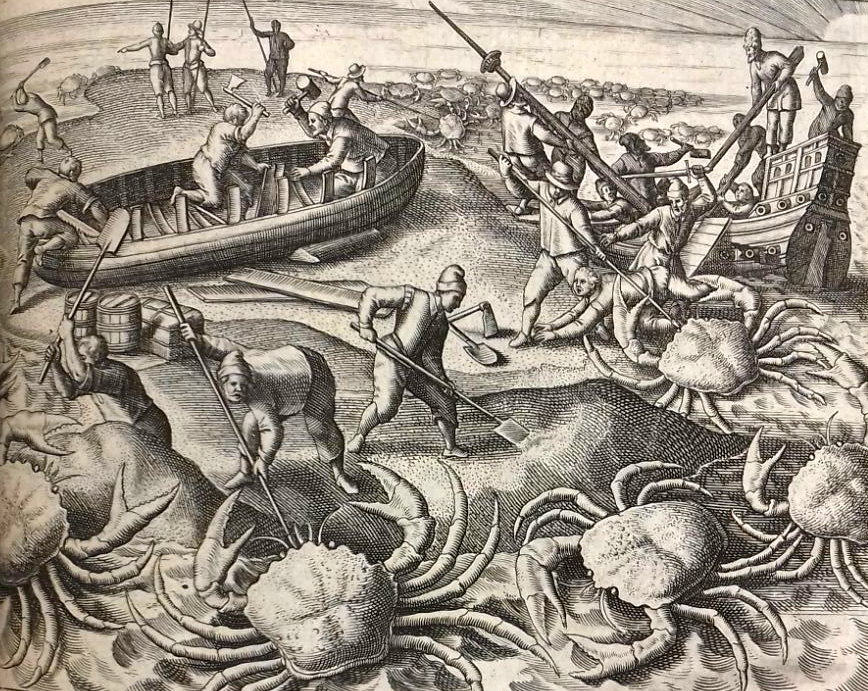
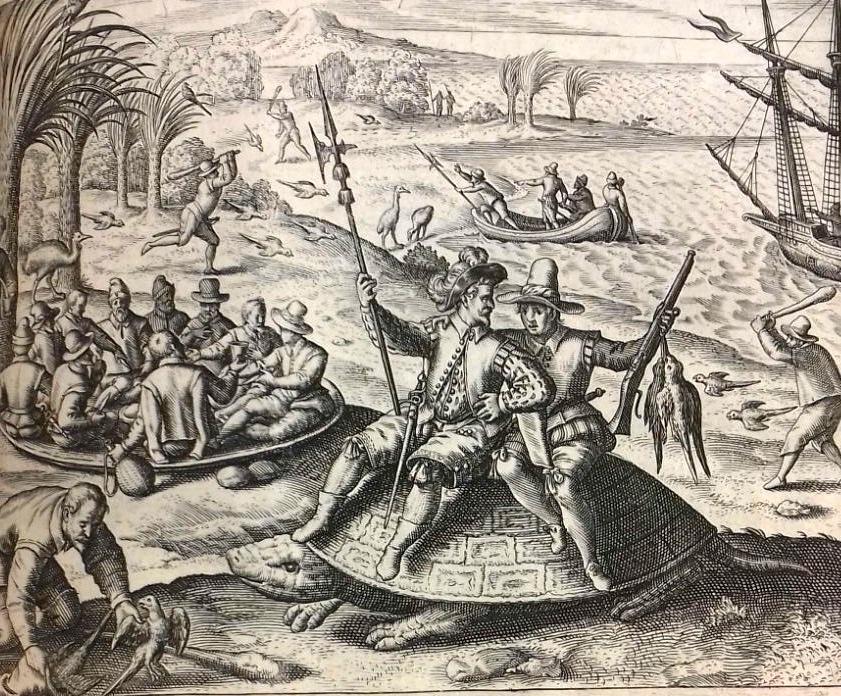
Where did the prints come from?
If you walk up to the ‘Atlantic’ gallery at the National Maritime Museum you will see four De Bry plates on display, including one depicting Pocahontas, daughter of Powatan. Works of art on paper must rotate frequently to avoid damages caused by light so they may not, in fact, be the same prints. The selection of plates you see are the result of a delicate balance that involves curators’ taste as well as objective criteria such as conservative issues and available space. But don’t look for the whole books, because you won’t find them: only the singles sheets (map and book pages) are shown there. How did this happen? Well, it is very likely that at some point in the past, somebody trimmed off the nicest plates from the books, in order to sell them. Then, somebody else found them interesting, and he/she started to buy and to collect them. Somehow, later on, these pages entered the Museum collections.
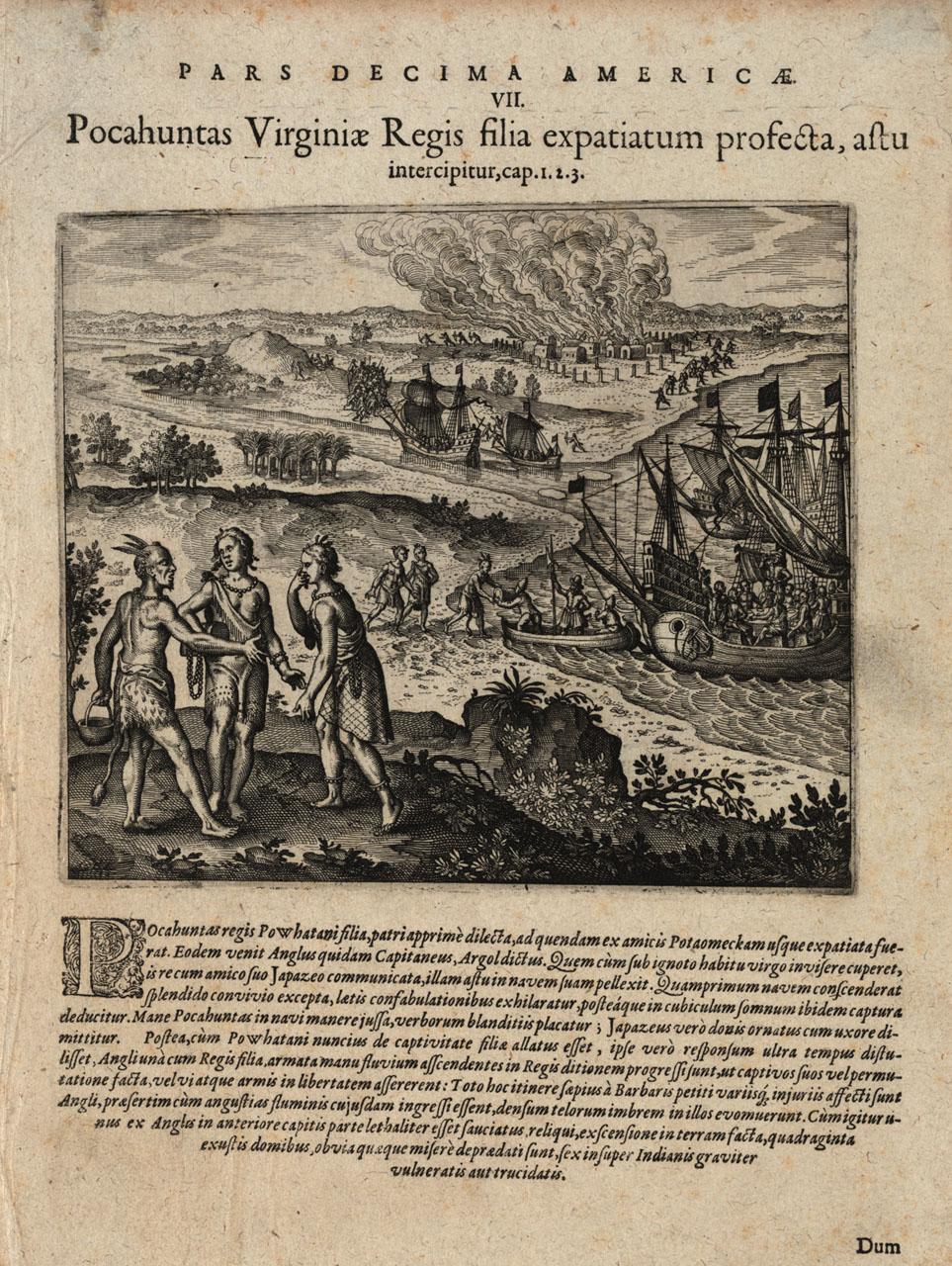
While researchers have already delved into all possible layers of meanings of the De Bry’s prints, the aim of my internship was quite practical: to collect enough information to update De Bry catalogue entries for the museum’s database. This meant taking all the pieces of the puzzle and understanding where these pages came from. Luckily enough, the Caird Library and Archive also holds all the De Bry books in multiple editions and issues: 186 books in total, bought in 1939. They proved very useful to connect each page with its book.
The most challenging task, however, was to work on the field relating to the prints’ ownership history. “Who was the prints’ former owner?” was the obvious question that arose as soon as the reconstruction of the sets of plates started to make sense. No information whatsoever was available on the Museum’s database, so I went around in the Curatorial Department enquiring about bequests, acquisition slips, print rooms and old classifications until I reached the roots of the Museum itself, back in 1930s. I started flicking through the pages of The Caird Collection of Maritime Antiquities, which is the catalogue of the museum’s founding collection. There, in volume IV, under the section “Discovery”, many De Bry prints (295, plus around 70 “omitted plates”) were listed, arranged under explorers’ names, such as: “Amerigo Vespucci. Set of Five Plates, as under…”.
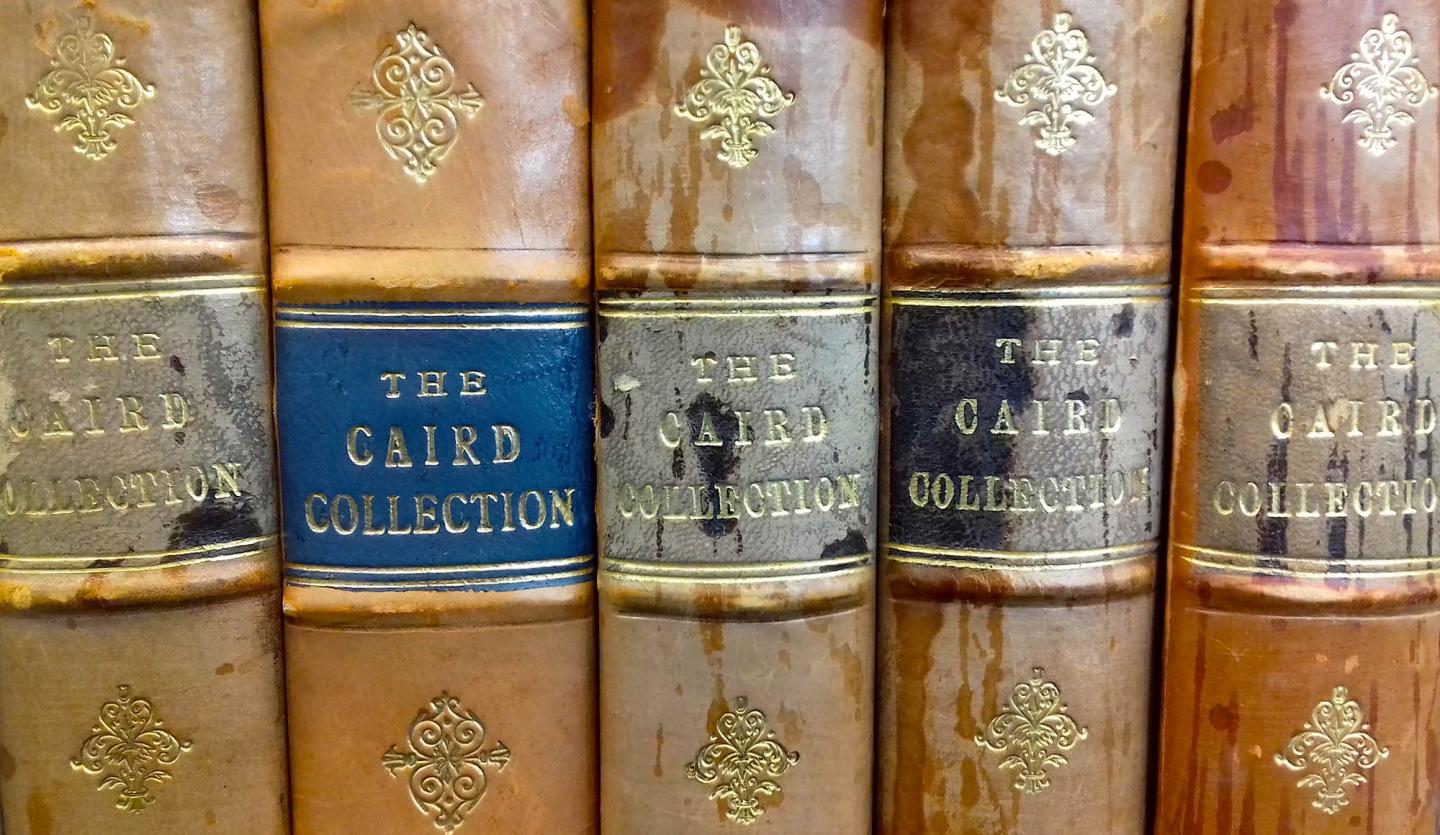
“When a collection runs over 12,000 items, it defies any human memory”
Before starting to identify the prints, I had to know more about this collection. By reading their correspondence conserved in the Museum’s archive, James Caird (1864-1954), Geoffrey Callender (1875-1946) and A.G.H. Macpherson (1873-1942) helped me solve the puzzle. Macpherson, a famous yachtsman, had assembled over 11,000 prints and drawings of maritime and shipping subject. When he decided to sell them, nobody wanted the collection to go abroad. Caird, a Scottish ship owner passionate about maritime heritage, bought the Macpherson collection in 1928 with the purpose of donating it to a suitable maritime museum. The Macpherson collection therefore became the founding collection of the National Maritime Museum, whose cornerstones were laid to secure the Macpherson collection to the nation. Well before the official opening in 1937, Callender, the first Museum Director, communicated daily with Caird in order to acquire and arrange new objects and collections for the Museum. In one of his letters to Caird, dated 22 October 1934, Callender wrote:
‘When you handed over to us the Macpherson collection we began at once the very great work (till then neglected) of making a card index, so that any item could be looked up in a few minutes of time. Work on this index has been going on continuously for 5 solid years, and is not yet complete. In its incomplete condition, it fillls two card index cabinets, each cointaining 12 drawers. We still have to card index the caricatures and discovery. We have left these till the last becasue they are the least likely to be demanded. It seems superfluous to add that we know the Macpherson collection very much better than Macpherson himself. When a collection runs over 12,000 items, it defies any human memory.’
These exciting lines told me not only how prints and drawings were studied and arranged at the Museum in its early history, but also that the ‘Discovery’ prints were not as much appreciated as they were by the collectors who had cut them out of their books. The De Bry prints stood out because of their narrative character, perhaps unusual in a maritime museum whose strengths (as far as prints are concerned) resided in ships portraits, maps and charts, naval battles, port views, seascapes and other strictly maritime-related subjects.
I set off in the task of identifying the De Bry prints from the Macpherson-Caird collection among the 380 ca. prints that the Museum’s database labelled as ‘De Bry’. Despite the mistakes and ambiguities in the prints’ descriptions in the Caird catalogues, I was able to find almost all of them: 275 (out of 295). The way they are mounted and the labels next to some of them, repeating the same information in the Caird catalogues, helped me too.
There is still a gap between the total number of De Bry prints at the Museum and the number of Macpherson-Caird prints that I have identified. This means that there is still room for some research in this field, and I hope that somebody will take over this study where I left it.
I consider myself very lucky: not only I had the possibility to work in the Curatorial Department of the Museum, but also, I had the chance to study a unique group of artworks so deeply connected with the story of the Museum that they gave me the opportunity to learn and reflect on museum practices (past and present) and on the evolution of meaning and values in museum collections.
I would like to conclude with an advice: always ask yourself what’s behind what you see on display in a museum: it might not be a “whole” but a “part” of something. Try to avoid seeing objects only as isolated and iconic items (especially artworks), but always try to imagine them in their original context as this will help you to understand them better. Ask questions, and the mighty object will (hopefully) answer you.